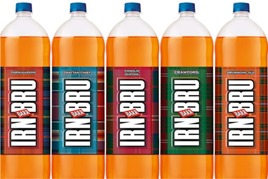Packaging as media in the age of digital printing
Despite the glorious moniker ‘Fast Moving Consumer Goods’, it takes a very long time to print a bag of sugar or a bottle using a conventional print process. It’s not uncommon for pack design projects to begin 12 to 18 months before launch. Partly as a result of this, packaging has been obliged to play a rather static role in the marketing mix, symbolising, reflecting, and at the most suggesting the values of the brand that are created by other more versatile and quick-footed media. The role of the pack was to remain steadfast and unchanged. Consistency was king.
But that assumption is being undone. The role of the pack within the marketing mix is profoundly changing. For the first time, the pack is now able to build the brand idea, rather than merely reflect it. For the first time, the pack is able to drive engagement in ‘real time’. For the first time, the pack is now media. And what’s enabling this shift is the advent of a new technology: digital printing. What used to take several months can now be done in a matter of days. If conventional printing is like a freighter ship—large, cumbersome and slow—then digital printing is like a speedboat. It’s fast, nimble and responsive.
Personalisation
So how is packaging being used as media in this brave new world? Personalisation, as ever, is a key trend. Narcissists like to feel special, which is why we all loved seeing our name on a bottle of Coke. But it also worked because it was consistent with the brand promise, and helped add another chapter onto the brand’s gleaming, beaming happiness story. But just because putting names on bottles worked for Coke, doesn’t mean it’ll work for anyone else.
There are other ways to resonate with an audience that increasingly demands fresh, new content. If you are a global or regional brand, a geo-specific strategy is one way to create tailored design content for different markets, regions or cities. Imagine coffee cups with unique designs for each outlet. Or in-room collateral tailored to each destination if you’re a hotel. As long as it fits with your brand idea, then consider your pack as a canvas, not a branded receptacle.
In December 2014 my company created an idea for Scottish carbonated beverage IRN-BRU. IRN-BRU is described as Scotland’s ‘other national drink’ (after whisky) and outsells both Coca-Cola and Pepsi in its home country. It’s a Scottish icon and a source of national pride. We proposed that the brand celebrate its heritage by changing its packaging to the tartan of (almost) every clan in Scotland. The launch saw the biggest ever week of traffic to the IRN-BRU website. We call this a ‘design campaign’—an initiative that uses packaging as media to advance the brand story.
Me, me, me
But of course, sometimes a more brazen appeal to your audience’s narcissism is too tempting to resist. Diet Coke repeated the Absolut stunt in Israel with 2 million unique bottles. Why? Because, according to the VP of Marketing at Coke in Israel, the company wanted to show Diet Coke drinkers that ‘they are extraordinary by creating unique one-of-a-kind extraordinary bottles’. Hmmm. For me, Diet Coke’s never been about individuality, or creativity, or art, or design, so this collection feels technology-led, rather than brand-led. Just because you can print 2 million different bottle designs, doesn’t mean you should.

An opportunity for more creative packaging
If you’re the owner of a big brand, you’re obliged to make big bets with any packaging change. Big bets, therefore, tend to be safe bets. Big bets make for risk-averse clients and boring, safe creative. Digital print is more cost effective for short runs, so it allows you to experiment, to test, trial, adapt, test again and perfect a design idea. That means we should see braver, more experimental work from agencies and clients alike.
Digital printing is a new technology, and like any new technology, we haven’t quite yet got to grips with it. The same timeless wisdom still applies—start with the brand, not the trend. But for clients, designers and creators who can see its potential, the size of the prize is unprecedented.
Here are some additional examples of brands that have made use of digital printing.
Heinz Get Well Soups allow customers to send a tin of Heinz soup with a personalised message to a friend feeling under the weather:

To re-engage a young audience that shuns traditional media, Japanese newspaper Manichi took to printing news stories on bottles of water, a new story every day:

By Katie Ewer, Strategy Director, JKR Singapore
First published on Campaign Asia
Previous Article
« M2 introduces Media Audit in Pakistan – Powered by R3Next Article
2015 Marketers' Outlook: Infographics »



